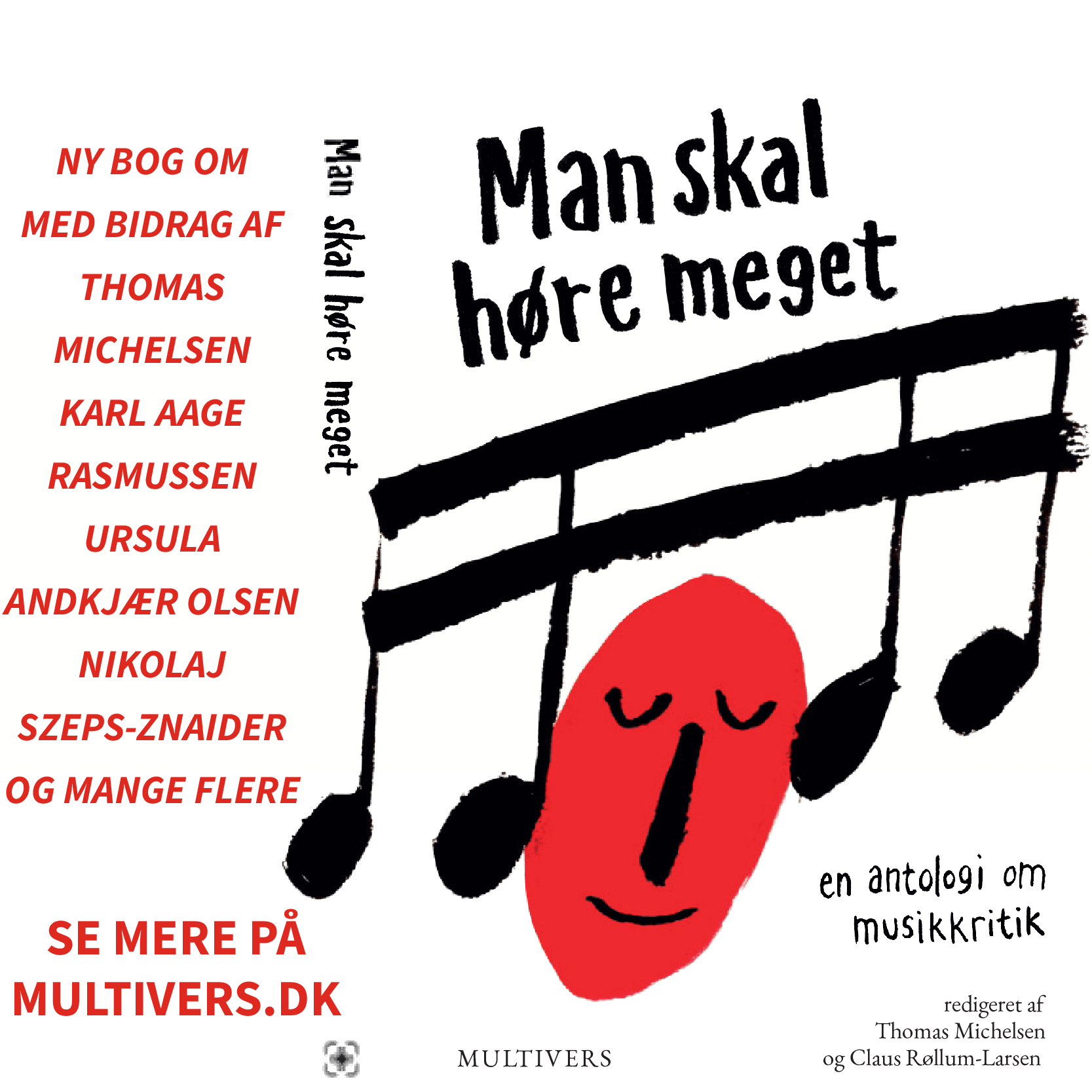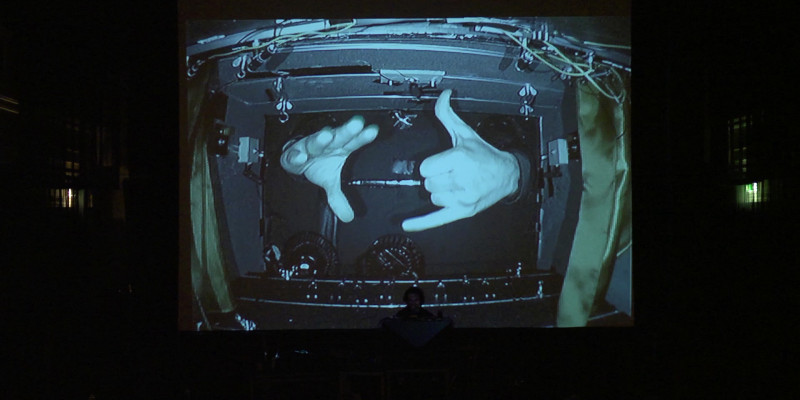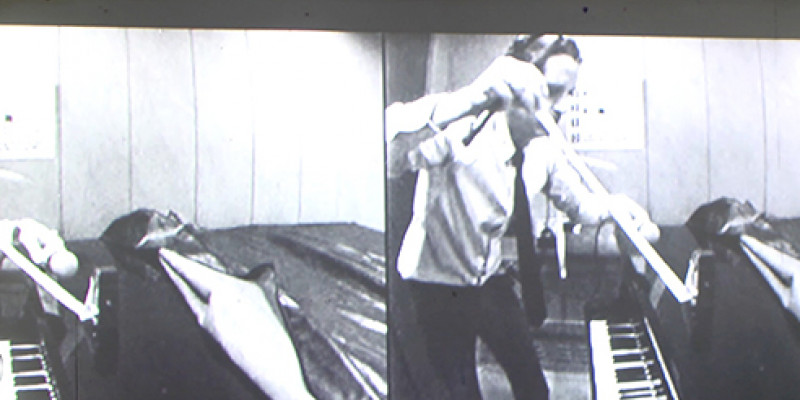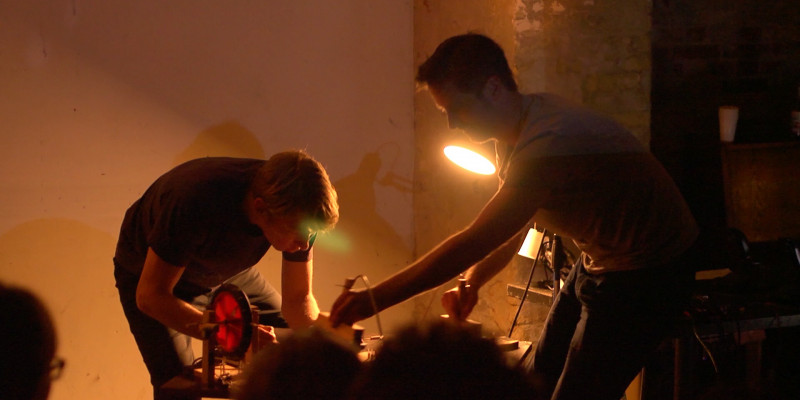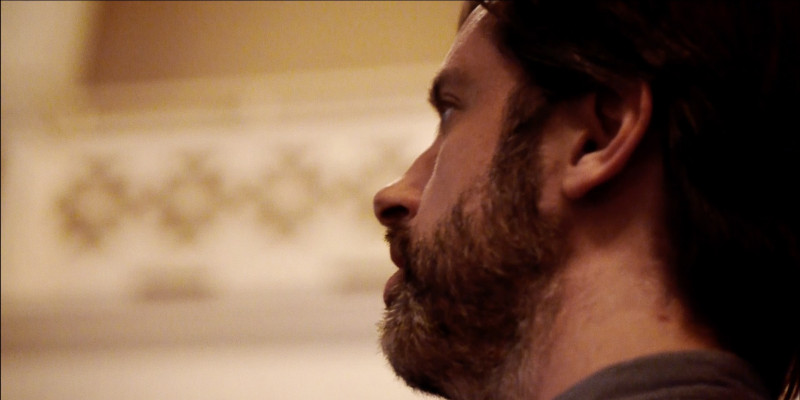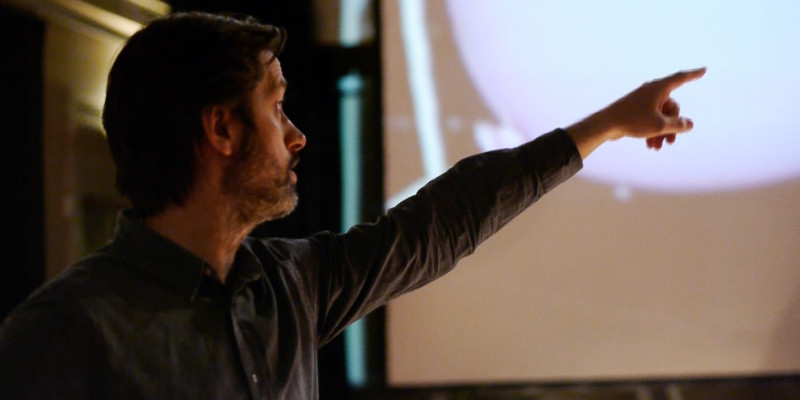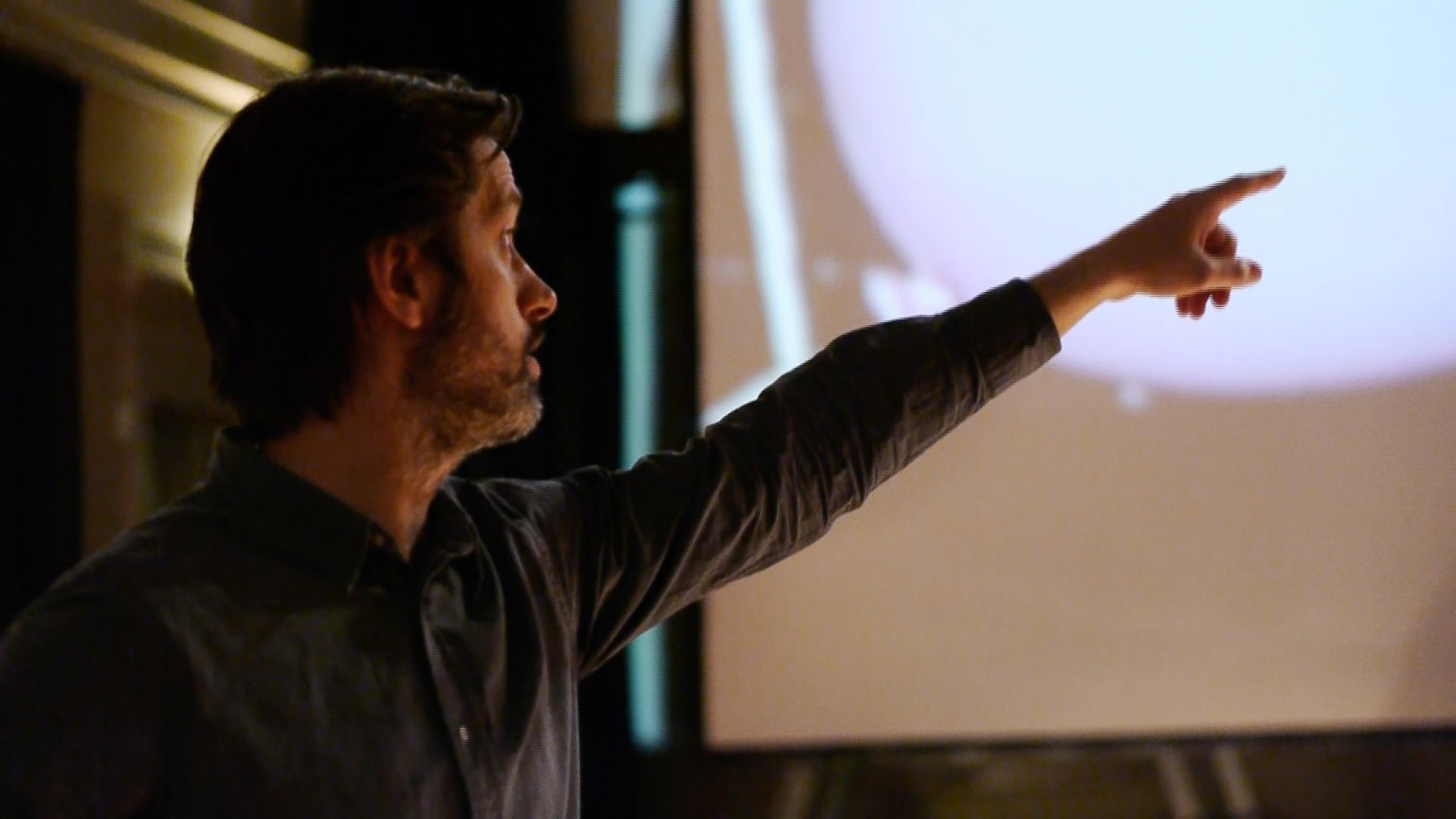
The mediatisation of reality
The latest proof of Simon Steen-Andersen’s status in the German language arts sphere was made evident in the Donaueschinger Musiktage about a week ago (19.10.2014, editor’s note). The mildly spectacular final concert took place in Baarsporthalle, which can accommodate between 2000 and 3000 people, and it was filled to the brim. First up was Steen-Andersen’s newly composed Piano Concerto for piano, sampler, video and orchestra with Nicolas Hodges as soloist. This was considered by many to be one the major pieces of the concert and festival. And, after the concert, it was announced that this year’s prize for the best symphonic work, awarded by the festival and SWR Symphony orchestra Baden-Baden and Freiburg, went to Steen-Andersen for Piano Concerto.
There are certain forms that may not have high demands, but have high expectations. There is a clear form and expression rooted in a suitably specific and well-defined form such as the piano concerto. If one composes a piece for an ensemble and give it a name that does not relate to the form, it will not generate the same expectations for a particular expression or a specific historical consciousness. But the piano concerto certainly does, and you can choose to relate to it or completely abandon it. The latter is of course difficult since the negation entails a reference. Steen-Andersen is obviously aware of this problem and seems to have chosen to attack it directly, but in his own way. He has let the classical piano concerto become a kind of archetype that, as usual, is about the encounter between the piano and the orchestra (concert comes from contrare, contrast). But in this case, there is a yet another encounter or contrast.
The work process also included video recording a grand piano as it fell to the ground from a height of eight metres, as well as the sound this entailed. Hodges also played on the broken piano that due to obvious reasons had a brittle and broken sound to it. This material (the grand piano’s fall and the recording of Hodges playing it) is used in the same way throughout the concert.
The pianist enters after this prelude, but not himself.
The piece begins with footage of the piano falling to the ground in slow motion on a large screen placed next to the orchestra, followed by a prolonged sound that is probably the sound of the piano landing on the ground (also in slow motion), a sound that is also produced by the orchestra. The pianist enters after this prelude, but not himself. This (possibly anticipated) contrast to the orchestra is partly replaced by the contrast that occurs between the pianist and the pianist himself. Across from Hodges, we see a picture of him sitting at the piano, which is projected onto a screen in the shape of a grand piano, right next to the physical grand piano. So now there are two pianists: Hodges sits across from the filmic Hodges who plays on the broken piano. The contrast in sound that occurs between the ‘broken’ and the ‘whole’ piano is, at the same time, balanced by the motorised unity in the form of minimal scale movements, which moves in both the piano and the orchestra. The orchestra seems to almost imitate the fractured world of sound. The piano, the broken piano and the orchestra represent the three main components or parts in this contrasting world that is also about melting things together. It is visual, extremely spectacular and a musical material where the ‘origin’ of the sonority is made clear, which makes the sonority itself tangible and concrete. Essentially, it is also a technically virtuous and impressive piece - direct, easy to understand and appealing.
It is visual, extremely spectacular and a musical material where the ‘origin’ of the tone is made clear, making the tone itself tangible and concrete. Essentially, it is also a technically virtuous and impressive piece - direct, easy to understand and appealing.
In the piano concerto, we see certain Steen-Andersen traits, which he has used in previous pieces. The juxtaposition of film and sound and the filmic production of musical material shown and heard along with the live music in the form of a dialogue is something that he has been working with for a long time. The series Next to Besides Beside, which he embarked on a decade ago, is an example of this.
This process, which is so important to many composers today – to create a basic musical material in collaboration with a musician playing techniques and tones, which is then notated and then the musicians play it – is something that Steen-Andersen relates to with a documentary style. He uses the recorded material, which is edited directly during construction. Just like in Run Time Error, where Steen-Andersen armed with joysticks allows images and sounds to run backwards and forwards, here he allows the piano to use the ‘real’ grand piano to trigger sounds from the broken piano with a sampler. In one way the live element becomes extra vivid – because even though the concert is in itself already live, the feeling of something being live and happening right in front of us is enhanced when combined with something that is recorded in advance.
The piano concerto, just like in Black Box Music, has a great deal of humour. This is most apparent in the way that the recorded pianist suddenly turns towards the audience and stares intently out into the crowd. This gives a kind of comical ‘Verfremdung’ effect, since this non-real (but not fictional either) pianist unlike the very much alive pianist, in principle does not know where the audience is sitting.
Humour is displayed throughout and above all in the way the video projection is played backwards and forwards, slow and fast. It means that we can see how the falling piano is smashed into pieces and then ‘sucked together’ again, which the orchestra ‘mimes’ in a Mickey Mouse kind of way. This exact instrumentation that allows us to hear something that sounds like the recorded tone in reverse, as well as the orchestra imitating the sound of the broken piano, is perhaps the clearest example of Steen-Andersen’s instrumentation art. Maybe it is all a little too much, a bit too gimmicky, too long and drawn out. This way of displaying the craft is unprecedented and deeply fascinating to witness and, above all, the sounds and movements fulfil a function in the greater whole. The concert’s grand form includes the above-mentioned introduction, then a thematic presentation with rhythmic motifs and towards the end, an ironic play on the classical solo cadenza – which requires every shred of Steen-Andersen’s talent for irony to work – and finally a repetition of the introduction and then a coda at the end.
What Steen-Andersen predominately says with Piano Concerto, is that reality today is mediatised.
Precisely like Black Box Music relates to instrumental theatre tradition over the last half century, Piano Concerto relates to the destruction of the grand piano to institutional criticism and specifically to certain Fluxus piece. All the honour and dignity to this genre historical point of resonance, but perhaps the most fascinating thing about Piano Concerto is how this classical concert genre is able to create the framework for not only a new piece, but also for what is today, our audiovisual reality. What Steen-Andersen says above everything with Piano Concerto is that reality today is mediatised. Our reality exists just as much in the here and now as it does in our digital archive, from which we can play what has happened in the past and what we have previously participated in. Imagine that one can express this with something as archaic as a piano concerto.
